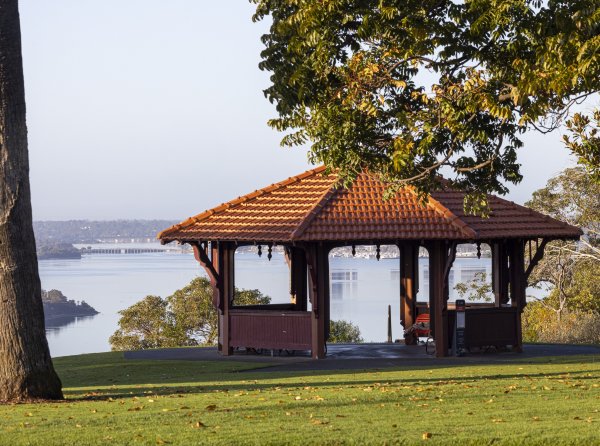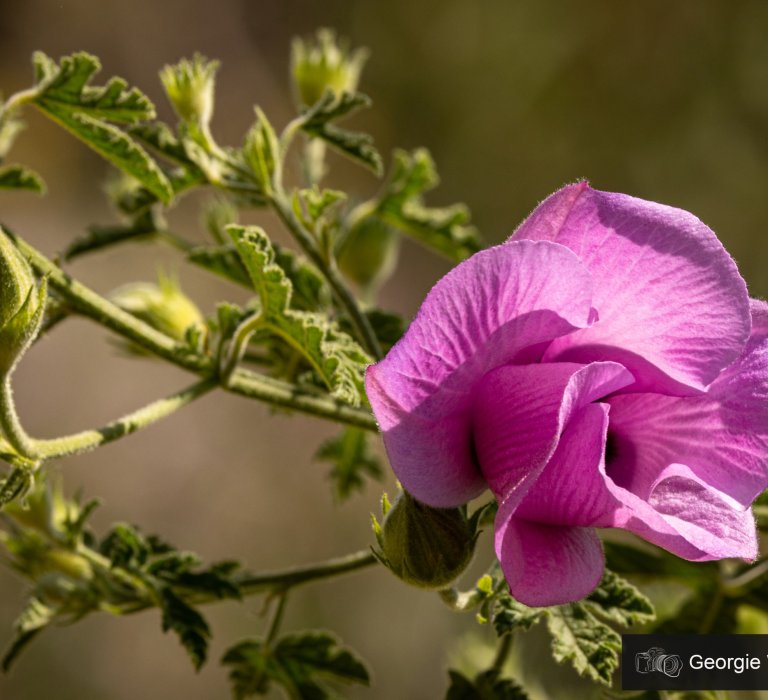

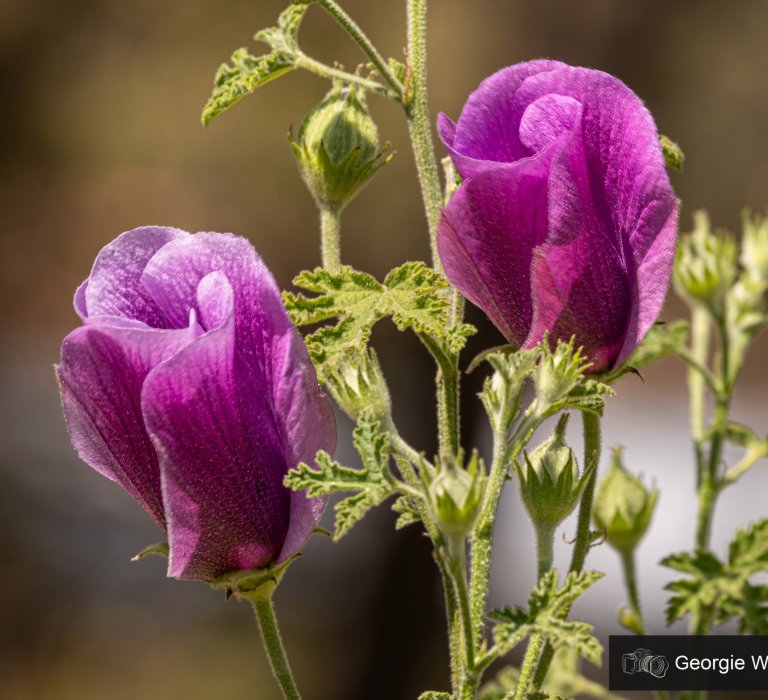
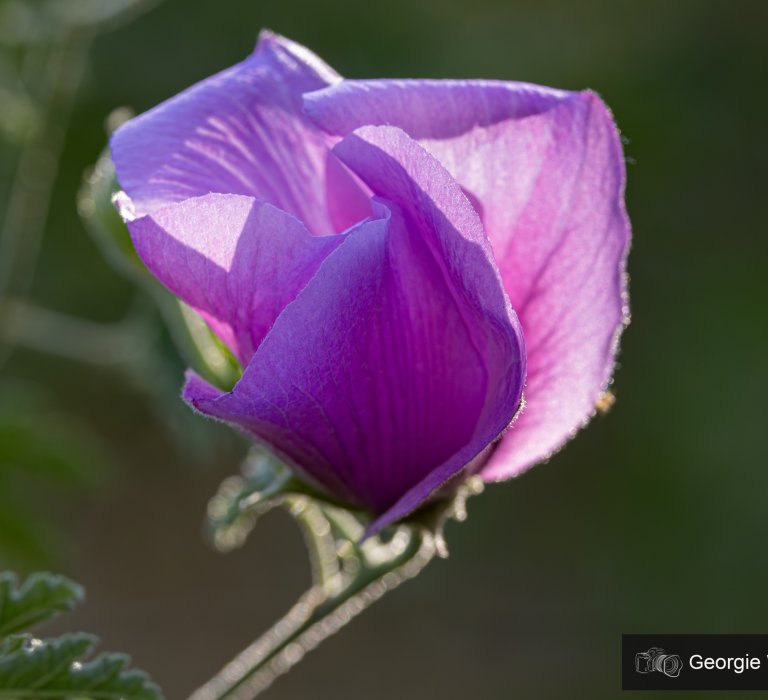
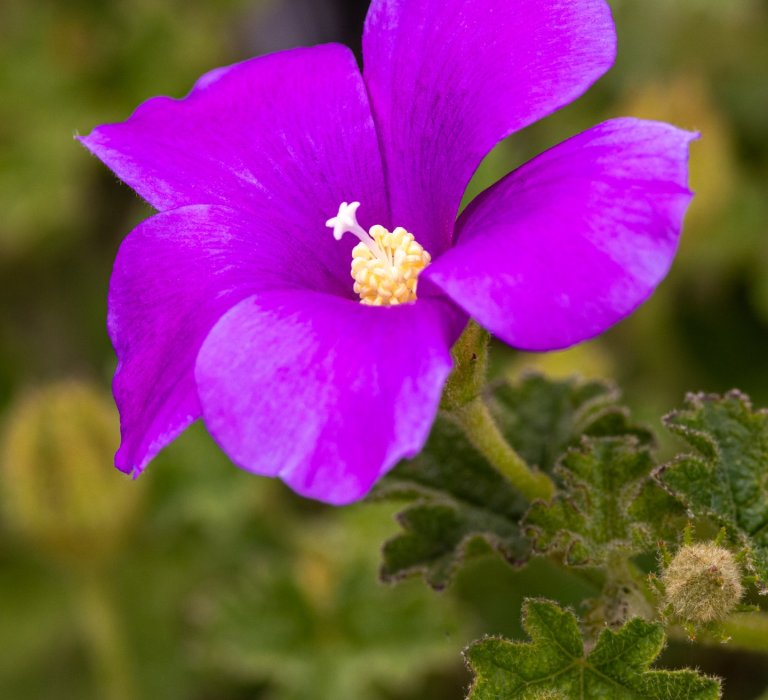
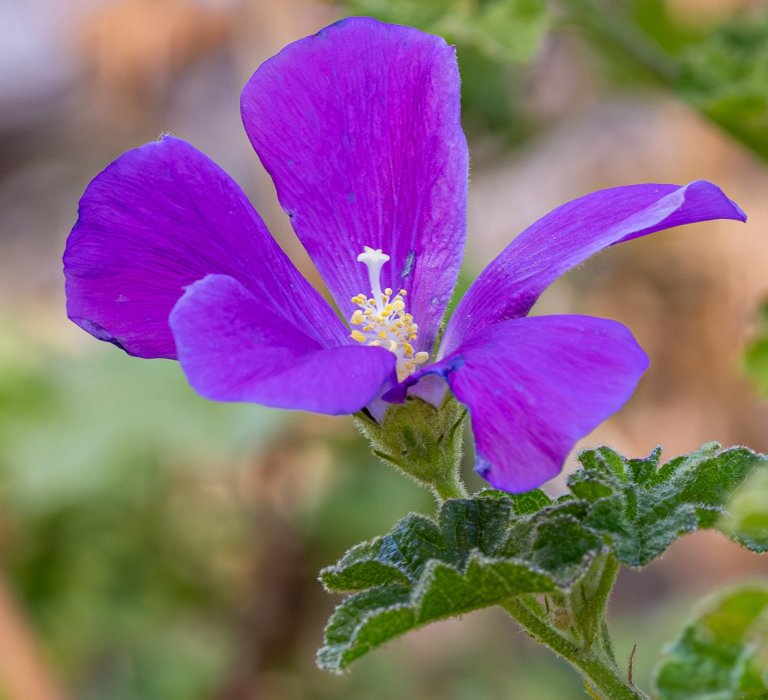
Guide Eve’s plant of the month for October
Alyogyne huegelii or lilac hibiscus is a large, showy, flowering shrub which flourishes in coastlands and heath along the coast of the SW botanical province of Western Australia, from Geraldton to Esperance.
The name Alyogyne comes from the Greek alytos meaning united and gyne meaning woman, a reference to the female part of the plant which is an undivided style. Huegelii takes its name from the botanist Baron von Hügel who visited the Swan River and Albany in 1833-4
The Alyogyne huegelii grows to 4 metres with many alternate branches and bright green leaves. It produces large, luminous flowers similar to hibiscus in colours of lilac, purple, mauve, cream and white. It is a valuable garden plant because it is fast-growing and rarely troubled by pests or diseases.
Alyogyne belongs to the Malvaceae family and, as with all the Malvales, the flowers only last around a day – becoming deeply coloured and papery when spent. They are numerous in the long flowering period between June and January around Western Australia. In Kings Park it is flowering in October.
In addition to its ornamental value, Alyogyne huegelii plays a vital ecological role, attracting pollinators such as bees and butterflies with its nectar-rich flowers. This plant also provides shelter and habitat for various insects and small birds, contributing to local biodiversity.
There is an Alyogyne huegelii growing in the Botanic Garden, just around the corner from the mosaic near the John Forrest explanatory panel. Also look out for the sand hibiscus or Alyogyne pinoniana in the same garden bed and in the mound near the floral clock.
The Kimberley Stolen Generations Aboriginal Corporation has adopted a native hibiscus plant (of which there are many varieties) to symbolise the scattering of the Stolen Generations and their resilience. It was adopted because the hibiscus is found widely across Australia and is a survivor. The lilac colour denotes compassion and spiritual healing. See here for more information about the Stolen Generations flower.
Join one of our daily guided walks or ask our friendly Guides in the Visitor Information Centre where to find varieties of native hibiscus in the botanic garden.
October 2024
Other news you may also like
Kings Park Guides launch new Facebook page!
16 April 2025Kings Park Guides launched their new Facebook page in March. The aim of the...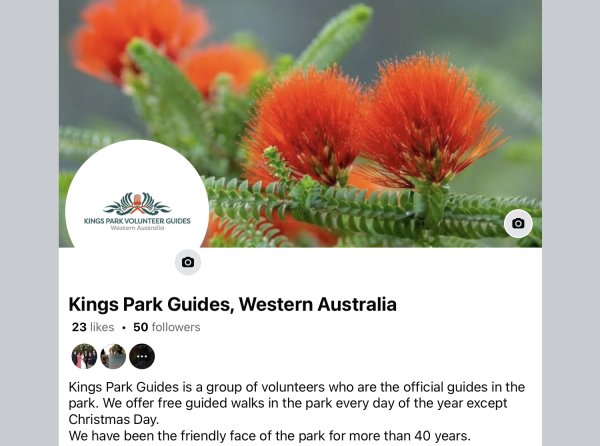
Guide’s plant of the month – Acacia dunnii
1 April 2025Acacia dunnii, or elephant ear wattle, is a Kimberley plant. It is growing in...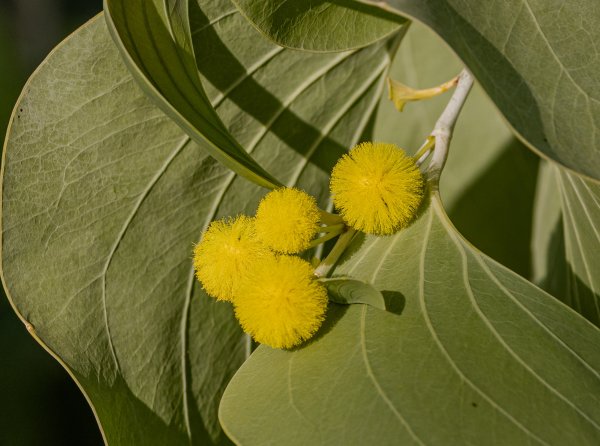 Georgie Wilson
Georgie Wilson Lotterywest Boorloo Heritage Festival – Join us to celebrate the heritage of Kings Park
15 March 2025The Lotterywest Boorloo Heritage Festival takes place in April each year and celebrates Perth’s...